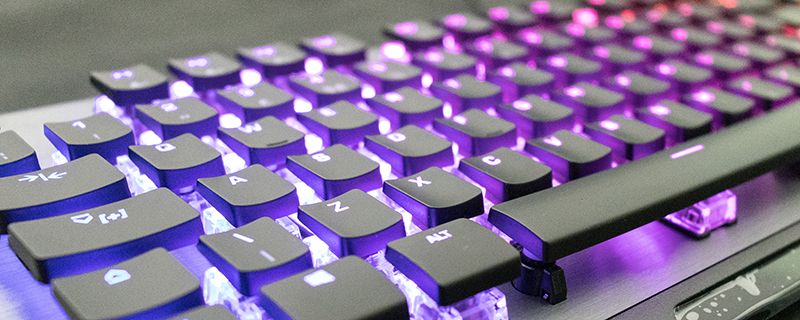Roccat Vulcan 120 AIMO Gaming Keyboard Review
Conclusion
Any time a manufacturer takes it upon themselves to design their own switch there is always a sense of anticipation. On the one hand the Cherry MX range is so firmly established as the de facto standard that you wonder why they would go to all the development effort and costs to reinvent the wheel, but on the other hand the Cherry switches have only become the standard because they went in a different direction to those switches that already existed and proved to have a better idea.
With the Titan switches at the heart of the Roccat Vulcan they have managed to get awfully close to the feel of the Cherry’s, but in a manner that actually does feel slightly different. Whereas the Cherry Brown switches have the tactile bump at the place where the switch actuates, the Roccat Titan switches have the bump right at the top. Now this isn’t really an issue in and of itself because the actuation distance is so short – by the time you feel the bump the key registers the press – but there is a tiny gap between the bump and the actuation so if you’re supremely gentle in your typing it is, just about, possible to feel the bump without the key press registering. As we say though, the chances of you typing without pressing the key at least halfway are almost non-existent so it’s really not an issue, just something to be aware of. Once you do depress the key though the feel is very linear and slightly smoother than the Cherry offering. With a much lighter key cap they belie their rated actuation force to feel even lighter. Furthermore the spring inside doesn’t load up in quite the same way that you get from the MX Browns, with the key feeling the same throughout the travel distance all the way down to the stops. They also rebound nicely as there is less weight for them to push back against. What this means in real terms is that you get a slightly more uniform typing and gaming experience than you do on a Cherry MX keyboard. It’s just as nice for gaming but a teensy bit smoother to type on.
We did have a small concern about the stability of the short key caps and stubby stalk perhaps introducing some of the wobble that we’ve experienced with other low profile keyboards, but the whole of the Vulcan 120 felt very robust with no slack, no wobble, no keys unexpectedly detaching themselves from the stalk. It’s very nice indeed and a testament to the careful tolerances with which the Roccat Vulcan has been built. The dial in the top right is very useful and feels very nice too. It’s certainly notchy rather than smooth, but given that it’s largely designed to cycle through a range of settings having each one give a clear tactile feedback bump as you turn it then it’s probably for the best. We’d have liked to have seen the dial made from metal to better echo the aluminium fascia of the Vulcan, but the plastic feels nice and robust.
Lighting is exceptional. By utilising a massive clear section on the switch itself, backed up by a light aluminium backdrop, and enhanced by the low profile key caps there is no doubt that the Vulcan 120 AIMO illuminates as well as almost any other keyboard you care to name. It’s particularly good at the difficult colours such as yellow, which remains yellow with no hint of green, and white which is white without the blue that often creeps in. You only need to look at the pictures on the preceding page to see how good the Vulcan lets you show off your customisation skills.
The three keys which handle muting your audio as well as switching what the dial controls are undoubtedly the weak spot of the Vulcan. Not only are they resolutely white regardless of your keyboard lighting settings, somewhat of an annoyance, but they also feel very squidgy to press in complete contrast to the crispness of the main keys and indeed the dial. These additional keys are a common failing of many mechanical keyboards so it’s not a problem unique to Roccat, but we’ve seen a few models recently that have put the same detail and effort into their extra keys so it’s something we’d have liked to have seen solved, especially on the flagship model of the Vulcan range.
Like many things it’s a matter of personal preference but if you’ve ever found yourself typing on a Cherry MX equipped keyboard and wishing that the key feel was a little lighter, rebounded a little faster and was generally a little more linear in the keystroke from top to bottom then the Titan switches at the heart of the Roccat Vulcan 120 AIMO might be the very thing. With the excellent dial, robust build quality and outstanding lighting it should find itself on anyone’s shortlist. Only the slightly high price-tag and those squidgy extra keys stop it from achieving a totally unqualified recommendation, and we’re happy to award it our OC3D Gamers Choice.
Discuss the Roccat Vulcan 120 AIMO in our OC3D Forums.




